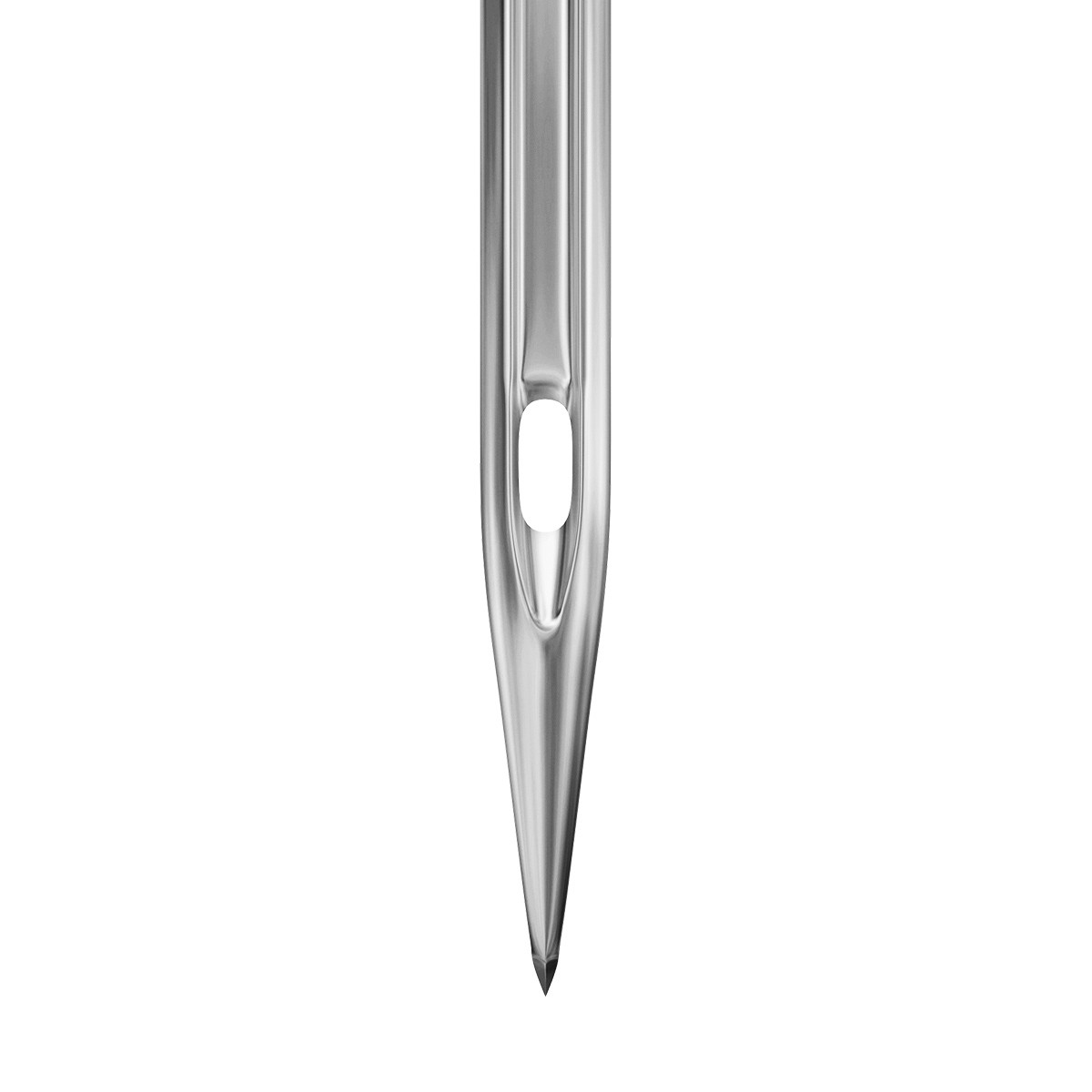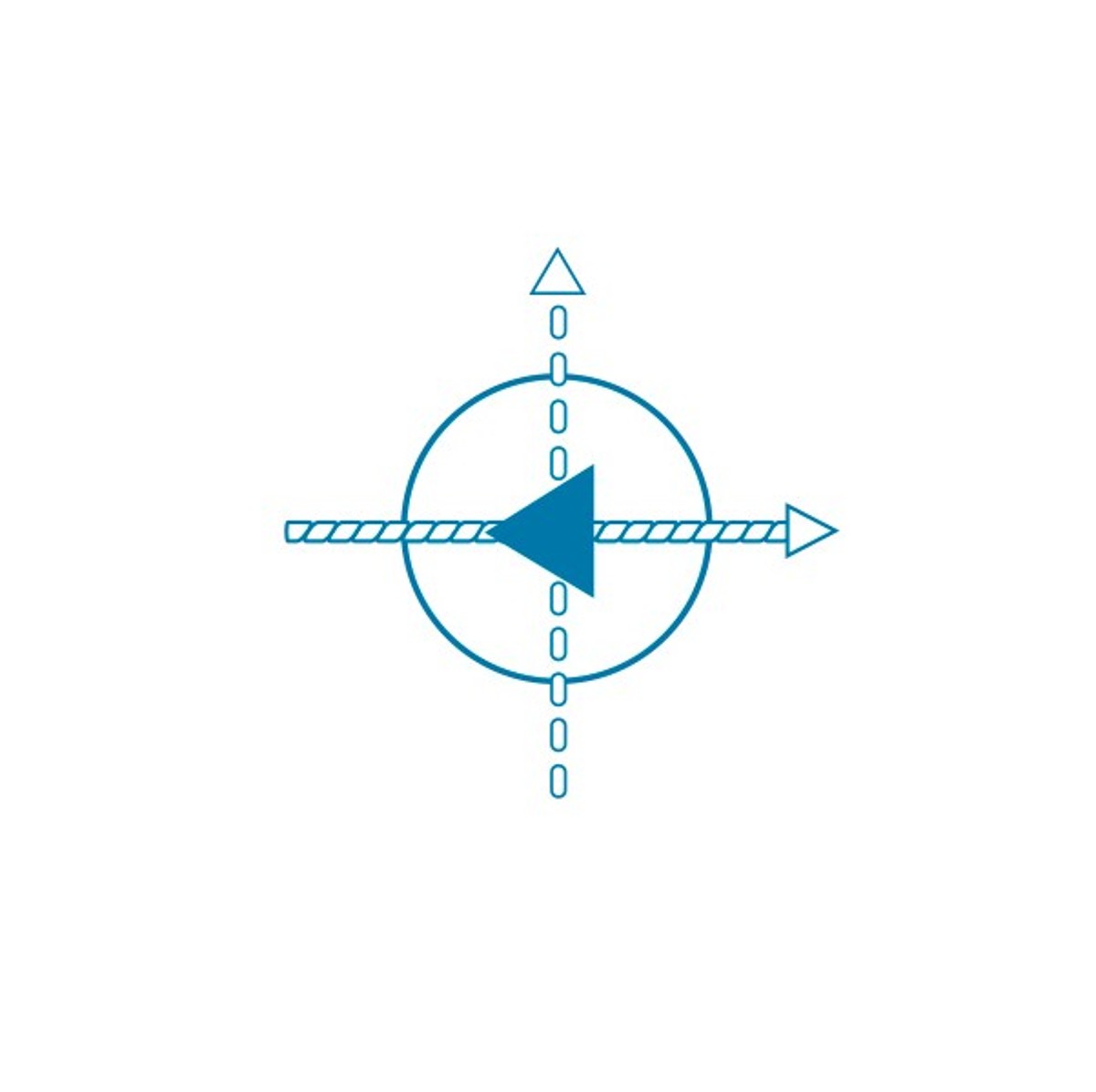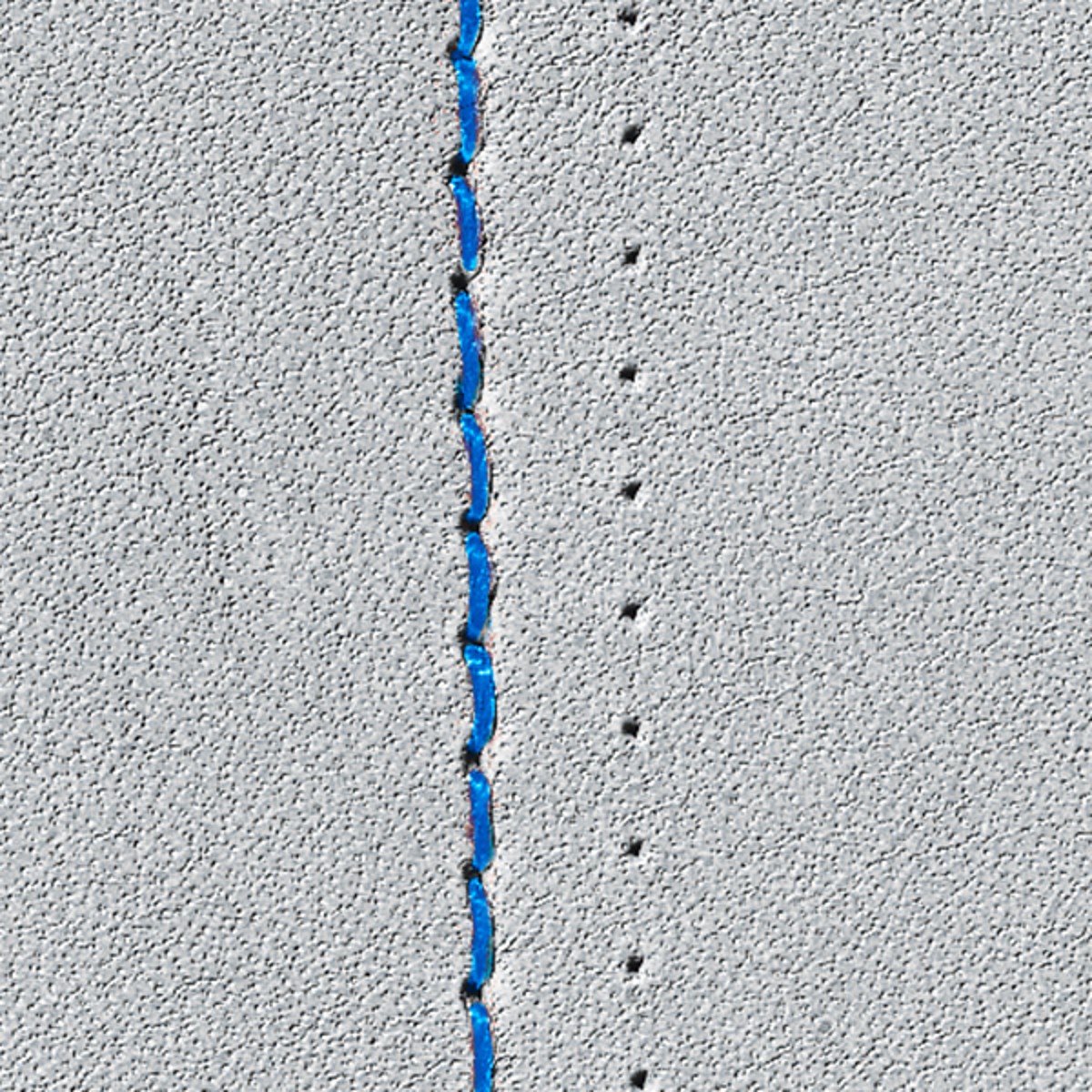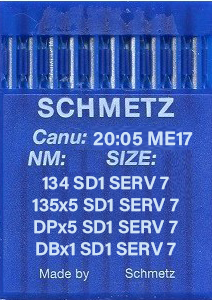Schmetz 134 SD1 SERV 7 Size 120 Pack of 10 Needles
Schmetz 134 SD1 SERV7 Size 120 Pack of 10 Needle
Round Point with small triangular tip "SD1" or "TRI TIP"
This round point with a very small triangular incision cuts approx. 10 % of the stitch hole, 90 % is displaced by the conical round point "R". The result is a straight seam and a tidy seam appearance. The incision is smaller than with a cutting point.



Materials:
- Fine leather
- Clothing made of leather and imitation leather
- Thin, synthetic leather materials
- Materials coated with PVC/PUR, e.g. tarpaulins, tents, coated table cloths
Applications:
- Leather
- Plastic
- Hard fibers
- Films
Highlight:
- The stitch appearance remains the same in all sewing directions when using multi-directional sewing techniques (programmable sewing machines).
For precision sewing of fine leather or faux leather, plastic foils and other “difficult materials”, the "SD1" – round point with small triangular tip – was developed. This point shape constitutes a compromise between a cutting point and a round point (displacement point). The small triangular cutting point at the extreme tip easily pierces the material (around 10 % to 15 %); the remaining 90 % is then opened up using the displacement principle of the round points. The result is a more accurate stitch placement and lower needle deflection than with use of a round point, plus a smaller incision than with use of a cutting point; in short, a straight, neat seam. A stitch density of around six to eight stitches/centimeter can be used.
Reinforced "SERV 7"
Increased needle stability and reliable seams
Besides fabric damage, skip stitches are a problem that frequently arises when sewing elastic material. To prevent them, SCHMETZ developed the SERV 7 needle. This specially shaped needle is made for almost all needle systems, with all the main point shapes and in all current needle sizes.
The SERV 7 needle in comparison to standard needles:
 |
The main distinguishing features of the SERV 7 design are the hump scarf that makes a particularly large loop of thread which can be more easily caught by the point of the hook and the blade reinforcement, that ensures the extraordinarily high stability of the needle. To produce the smallest possible stitch holes and optimise fabric displacement, the SERV 7 design thus often allows the use of a needle one size smaller without any reduction in the stability of the needle. |
 |
The illustration shows how the design of the SERV 7 forms a large loop of thread. The hump scarf extends the loop so that the hook or looper can catch it easily; this greatly reduces skip stitches. In a standard needle, the loop is considerably smaller and is therefore not caught by the point of the hook or looper. A skip stitch occurs. |
 |
SERV 7 needles have a 15 % reinforcement, and as much as 20 % in some needle sizes. Therefore, the needle is especially stable and far less likely to “bend”. Neither the hook or looper nor other machine parts, e.g. the throat plate, are damaged. Both needle designs were deflected with a force of one Newton (N). The SERV 7 needle was bent far less by this lateral force than the standard needle. |
The special stability of the SERV 7 needle is particularly valuable for use with thick materials and multiple layers of fabric, such as in sewing cross seams in jeans manufacture. Other classic instances of deployment of SERV 7 needles are in production of interior upholstery for the car industry, but also for the processing of particularly fine materials. Due to their greater stability, thinner needles can be used for finer materials without difficulty and yet still have the requisite stability.
Sold in packs of 10.


